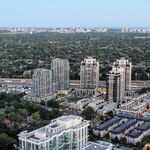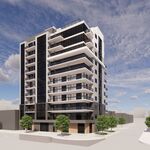Fresh Start
Banned
I understand the ideology behind Transit City, to get mass transit into virtually every city ward of the 416. While that concept has merit, what doesn’t have merit is stretching the denotation of what exactly “mass transitâ€, or better yet “rapid transitâ€, truly means by equating long distances of road-median ROW operation through mixed traffic to transit that operates in an exclusive corridor whereby optimal high service frequencies and speeds can be achieved. In attaining sustainable growth, a corridor's desirability for travelling along can be hindered by the former scenario while the latter in Toronto's case is a proven success given the hundreds of thousands that flock to subway corridors in a reserved ROW everyday.
In keeping with the SOS- Save Our Subways movement, I’ve decided to not only challenge the Sheppard East LRT’s credibility as an optimal solution for riders along that corridor and throughout the greater northeast quadrant of Scarborough; but I also aim to critically analyze the worth of the other proposed LRT lines as well. Seeing where corridors and destinations could survive with other modes of transportation- Bus Rapid Transit (BRT) along designated lanes which can accommodate similar passenger volumes as light-rail yet has less per kilometre expense to implement; and subway rapid transit (HRT) for areas with too dense a population or destinations demand to make do with lower capacity surface trams.
I open this thread, not to attack light-rail per se but rather to assess where it will fit in and function best within our transit network. Because governments’ involvement in providing funds should be tied to allowing the municipality to best service its constituents’ wants and needs, and not dictating to grantees how those funds ought to be spent; I charge that the ideological motives of one mayoral reign can change over time without mass upheaval. And a lot has happened since the reelection campaign of 2006. While it is good to come with a conservative spending plan, sometimes it is worth the increased costs of some projects if the end-goal is how to best cater to linking major trip-generators where the greatest number of transit users seeks to go. No sense cutting corners in the short-term, if 25 years from now the cries to replace a Transit City corridor with a subway due to demand levels exceeding the LRT's carrying capacity go unrequited because of an even more highly inflated cost to build than in the present.
So forum how would you answer the following poll question:
If we could start all over from today, and the roughly $12-$15 billion dollars being reserved for the City of Toronto/416 transit expansion that’s going towards Transit City was open to be used for any number of transportation/infrastructure projects, how would Urban Toronto best reallocate the funds?
And here are my own personal recommendations based on discussions here for satisfying the commuting transit needs of Scarborough:

In keeping with the SOS- Save Our Subways movement, I’ve decided to not only challenge the Sheppard East LRT’s credibility as an optimal solution for riders along that corridor and throughout the greater northeast quadrant of Scarborough; but I also aim to critically analyze the worth of the other proposed LRT lines as well. Seeing where corridors and destinations could survive with other modes of transportation- Bus Rapid Transit (BRT) along designated lanes which can accommodate similar passenger volumes as light-rail yet has less per kilometre expense to implement; and subway rapid transit (HRT) for areas with too dense a population or destinations demand to make do with lower capacity surface trams.
I open this thread, not to attack light-rail per se but rather to assess where it will fit in and function best within our transit network. Because governments’ involvement in providing funds should be tied to allowing the municipality to best service its constituents’ wants and needs, and not dictating to grantees how those funds ought to be spent; I charge that the ideological motives of one mayoral reign can change over time without mass upheaval. And a lot has happened since the reelection campaign of 2006. While it is good to come with a conservative spending plan, sometimes it is worth the increased costs of some projects if the end-goal is how to best cater to linking major trip-generators where the greatest number of transit users seeks to go. No sense cutting corners in the short-term, if 25 years from now the cries to replace a Transit City corridor with a subway due to demand levels exceeding the LRT's carrying capacity go unrequited because of an even more highly inflated cost to build than in the present.
So forum how would you answer the following poll question:
If we could start all over from today, and the roughly $12-$15 billion dollars being reserved for the City of Toronto/416 transit expansion that’s going towards Transit City was open to be used for any number of transportation/infrastructure projects, how would Urban Toronto best reallocate the funds?
- Keep Transit City as is, don’t fix what’s not broken
- Modify Transit City (more grade-separation, less minor stops), but nothing else
- Keep Don Mills and Jane LRTs, build Eglinton and Sheppard East as subways
- Build a complete DRL (Pearson Airport-OSC) and Yonge extension to RHC
- Build partial DRL, partial Eglinton, finish Sheppard to SCC, extend B-D in both directions, Yonge Line to Steeles
- BRT network citywide + DRL and Eglinton subways in full.
- Improved local GO Transit including "DRL-lite" completely alongside the rail corridors + LRT elsewhere
- Cancel just Finch West, Jane, Scarborough Malvern, Waterfront West; replaced by BRT
- Cancel just (lower) Don Mills, Eglinton, SELRT; replaced by subways
- Build Skytrain-like MarkII/ICTS corridors along Eglinton, Don Mills and Finch Hydro
And here are my own personal recommendations based on discussions here for satisfying the commuting transit needs of Scarborough:





